
In today’s fast-paced world, it’s no wonder that people are seeking tranquility and balance in their living spaces. One interior design style that has gained immense popularity over the years is the Asian Zen Interior Design Style. With its emphasis on simplicity, natural elements, and harmony, this design style can turn any home into a serene oasis. In this article, we’ll delve into the history, key elements, and practical tips to incorporate Asian Zen interior design into your home. Additionally, we’ll explore its pros and cons and answer some frequently asked questions.
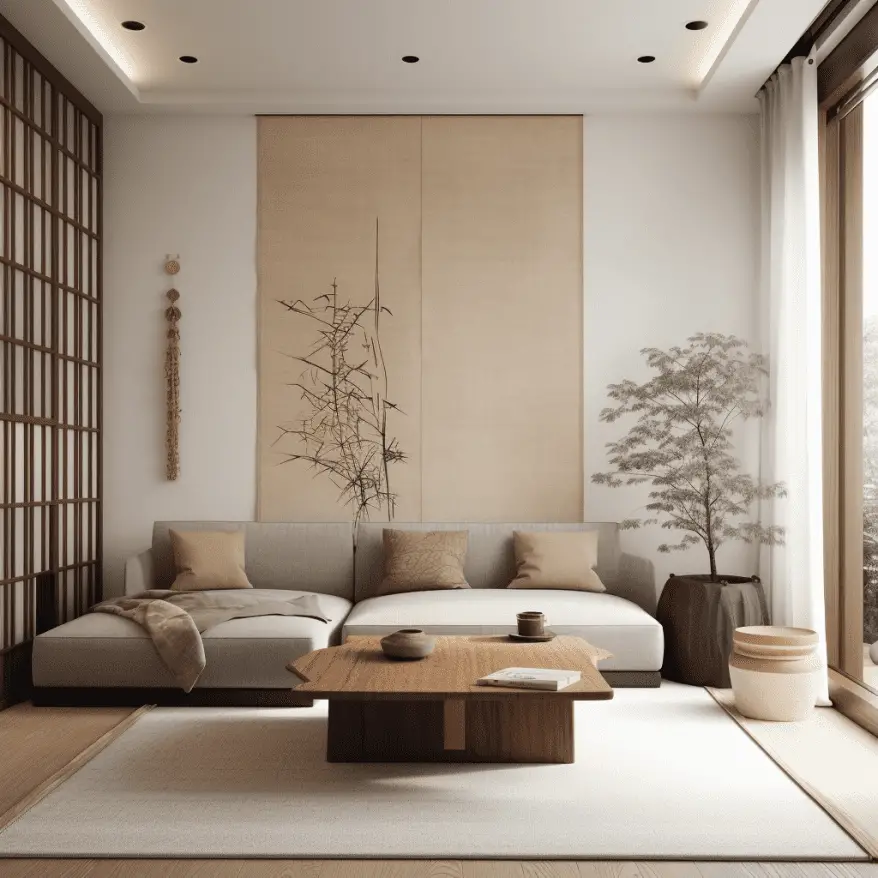
Table of Contents
History of Asian Zen Interior Design Style
The Asian Zen Interior Design Style finds its roots in Japanese Zen Buddhism, which emphasizes meditation, mindfulness, and the pursuit of inner peace. This philosophy transcends to the design style by creating a harmonious living environment that fosters relaxation and mental clarity. Over the years, the Zen design style has evolved and blended with other Asian design styles, such as Chinese and Korean, to create a unique and cohesive aesthetic (learn more about Asian Zen history here).
Key Elements of Asian Zen Interior Design Style
Simplicity: The core principle of Asian Zen design is simplicity. Spaces are uncluttered, and furnishings are minimalistic, creating a sense of openness and tranquility.
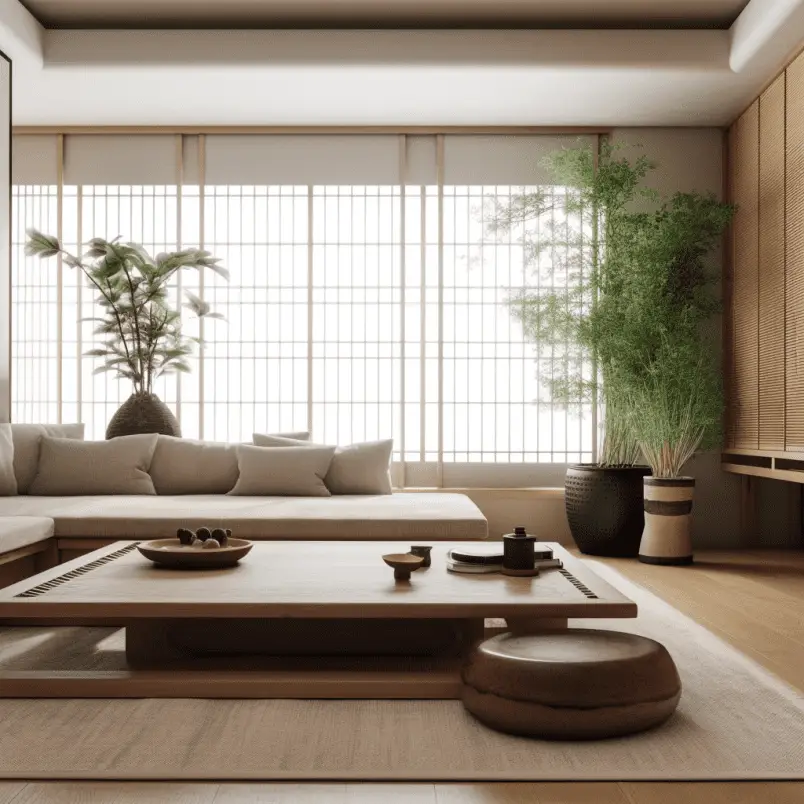
Natural Materials: Wood, bamboo, stone, and other natural materials are essential in Zen interior design. These elements help to connect the space to nature and create a soothing atmosphere.

Neutral Color Palette: Earthy tones, such as beige, brown, and gray, are predominant in Zen design. These colors evoke a sense of calm and harmony.
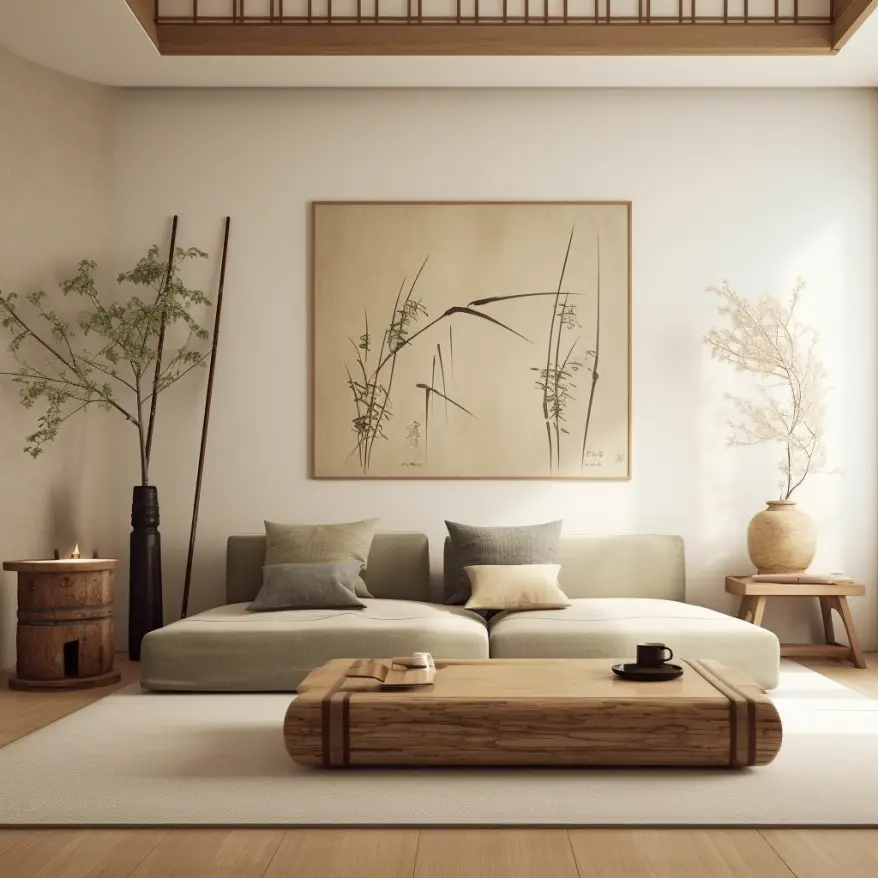
Natural Light: Large windows or sliding doors are used to allow natural light to flow into the space, creating a bright and airy ambiance.
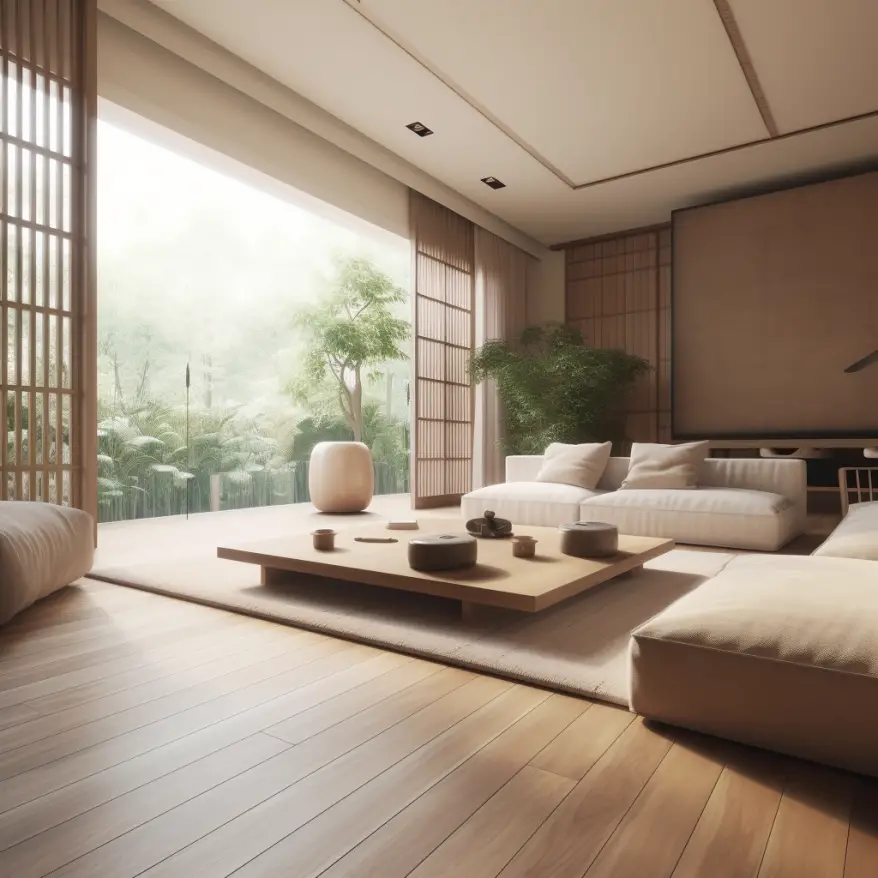
Water Features: Fountains or small ponds are common in Zen design, symbolizing the flow of energy and promoting a sense of serenity.
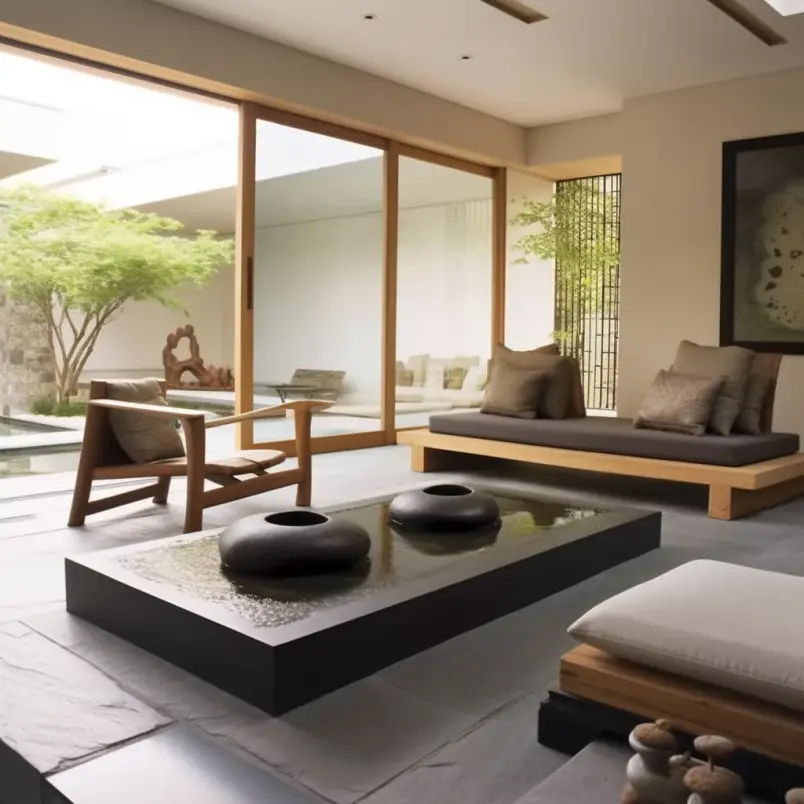
Indoor Plants: Adding greenery, such as bamboo or bonsai trees, not only enhances the connection to nature but also purifies the air.
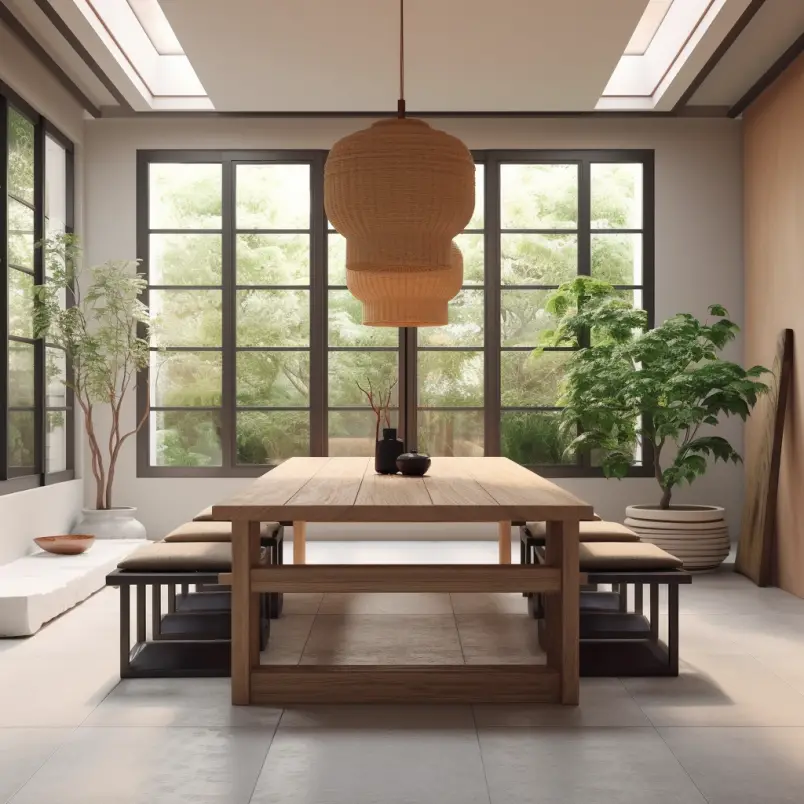
How to Incorporate Asian Zen Interior Design into Your Home
- Declutter: Start by removing unnecessary items and creating a clean, uncluttered space.
- Choose Natural Materials: Select furniture and décor made from natural materials, such as wood, bamboo, or stone.
- Opt for a Neutral Color Palette: Paint your walls in earthy tones and choose furnishings that complement the color scheme.
- Maximize Natural Light: Remove heavy curtains or blinds and opt for light, airy window treatments that allow natural light to fill the room.
- Add Water Features: Consider incorporating a small fountain or pond in your living space to promote a sense of tranquility.
- Incorporate Indoor Plants: Place potted plants or small trees throughout your home to enhance the connection to nature.
Asian Zen Interior Design in Different Rooms
Living Room
Use low-profile furniture, soft cushions, and natural textures to create a cozy and inviting space for relaxation.

Bedroom
Choose a minimalist bed frame, neutral bedding, and simple wall art to create a calm and restful atmosphere.
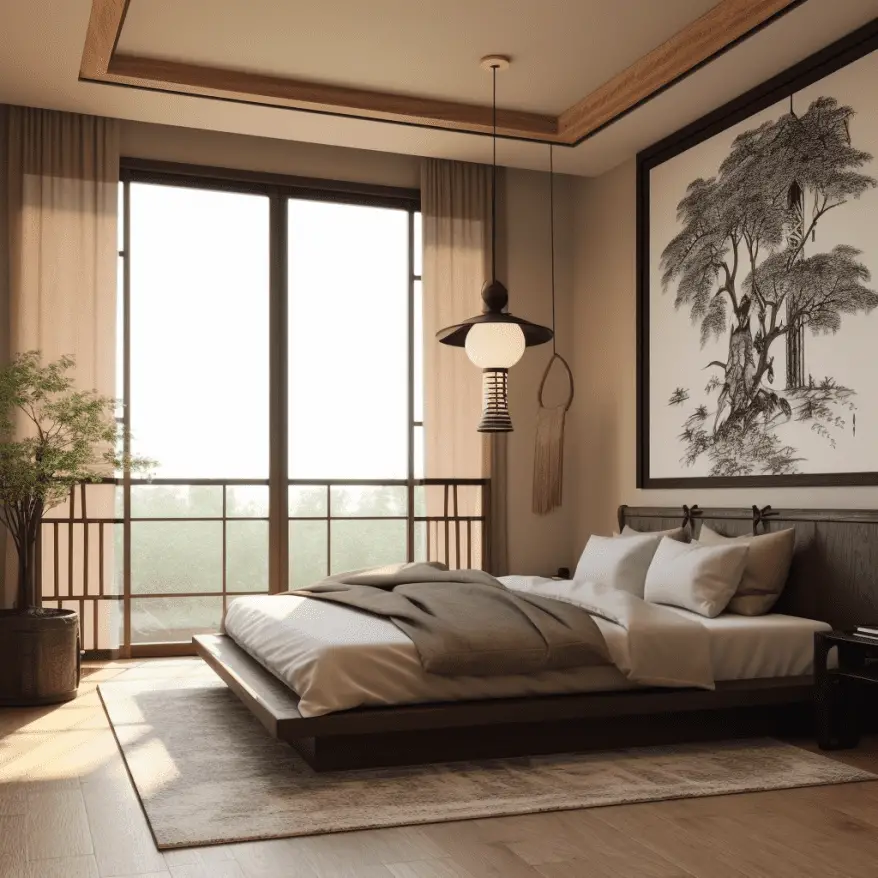
Kitchen
Opt for open shelving, bamboo utensils, and natural stone countertops to bring a Zen vibe to your culinary space.
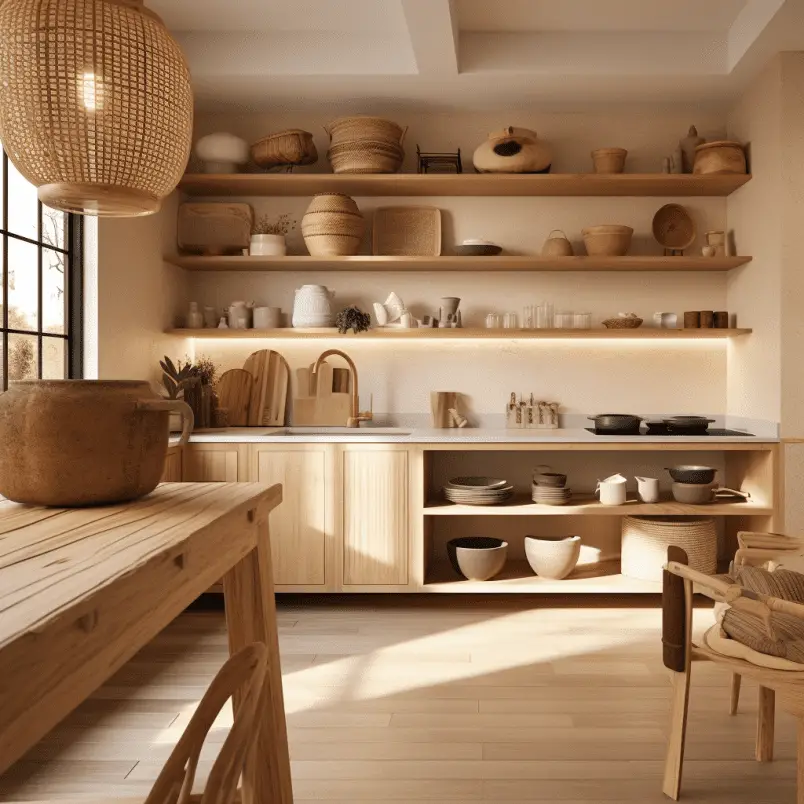
Bathroom
Create a spa-like environment with a stone bathtub, natural materials, and calming scents like lavender or eucalyptus.
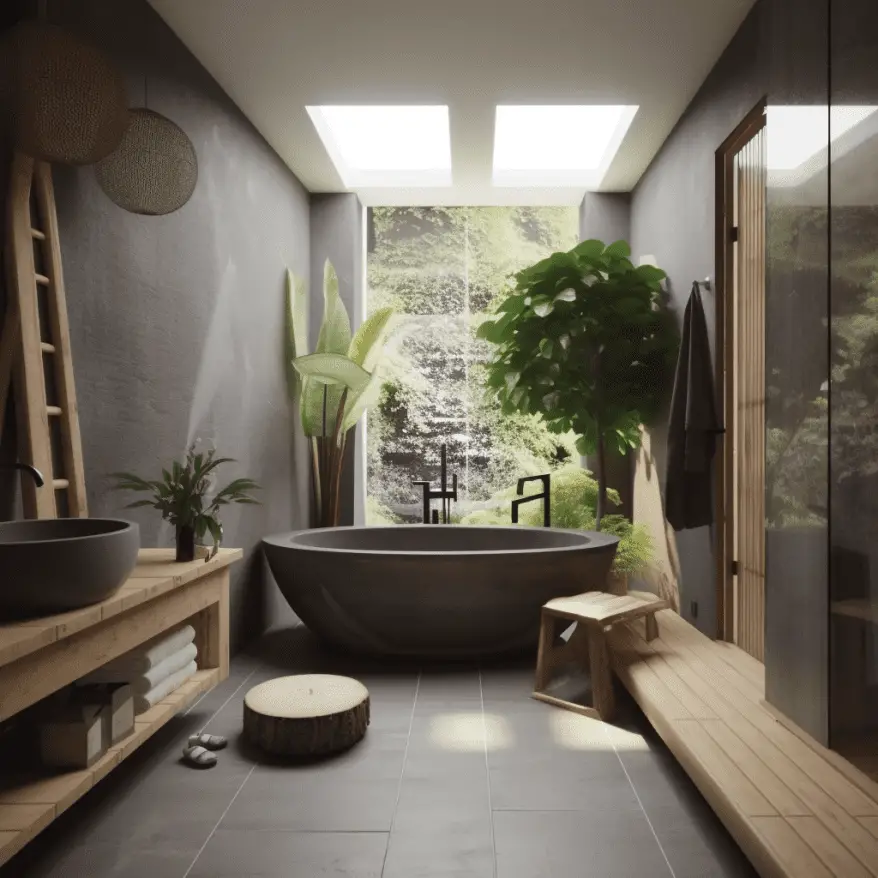
Pros and Cons of Asian Zen Interior Design
Pros:
- Promotes relaxation and mental clarity
- Timeless aesthetic
- Low maintenance
- Environmentally friendly
Cons:
- May be perceived as too minimalistic for some
- Can be costly if starting from scratch
- Requires strict adherence to design principles
Conclusion
The Asian Zen Interior Design Style offers a refreshing and calming alternative to the chaos of modern life. By incorporating natural materials, earthy tones, and minimalist design principles, you can transform your living space into a tranquil oasis that promotes relaxation and mental clarity. Keep in mind that the Zen design style may not suit everyone’s taste, but for those who appreciate simplicity and harmony, it’s a rewarding and timeless choice.
FAQ
Is Asian Zen Interior Design suitable for small spaces?
Yes, Asian Zen Interior Design is ideal for small spaces. Its minimalist and uncluttered approach can make even the smallest of rooms feel more spacious and airy.
Can I incorporate Asian Zen Interior Design elements in my existing home without a complete makeover?
Certainly! You can start by decluttering, adding indoor plants, and replacing heavy window treatments with lighter ones. Gradually, you can introduce more elements, such as natural materials and earthy colors, to create a cohesive Zen-inspired space.
Is the Asian Zen Interior Design style expensive to implement?
While it can be costly if you’re starting from scratch, you can make budget-friendly choices by repurposing existing furniture or shopping for second-hand items made from natural materials. Also, keep in mind that Zen design is about simplicity, so you won’t need to purchase excessive décor items.
Can I mix Asian Zen Interior Design with other design styles?
Yes, you can blend Asian Zen Interior Design with other styles, such as modern or Scandinavian, to create a unique and personalized space. The key is to maintain a sense of harmony and balance in the overall design.
How do I choose the right indoor plants for my Asian Zen interior?
Opt for low-maintenance plants that thrive in indoor environments, such as bamboo, snake plants, or peace lilies. You can also incorporate bonsai trees, which are a staple in Zen design, but keep in mind that they require more care and attention.
